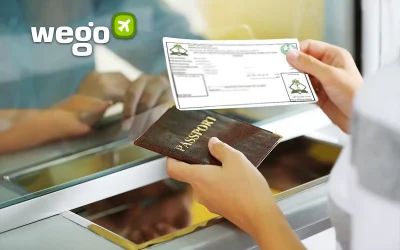This article is reviewed regularly by Wego’s editorial team to ensure that the content is up to date & accurate.
Reviewed April 2024
The EU Entry/Exit System (EES) is an innovative program designed to log and monitor individuals outside the EU who arrive in or depart from the Schengen region. The implementation of EES promises strengthened management and security at borders. Let’s take a closer look at what the EES is and how it works.
Read on with Wego to get to know everything about the EU EES system.
Table of Contents
What is the EU EES system?
The EU EES is a computerized system that records non-EU nationals crossing any EU external border regardless of their short-stay visa requirements using an automated IT system. In addition, it provides digital record-keeping for entry refusals to make passport control quicker and more effective by replacing the need for passport stamping. Its purpose includes enhanced border security and management while thwarting illegal migration and identity fraud methods.
The EES furnishes travellers with transparent information about their obligations upon entering/exiting Europe and permits online verification of stay allowance; hence, mandatory rules are applied without exception to all non-EU tourists embarking on 90-day or fewer visits within every 180 days through indicated European countries.
EU EES system
The system will record the traveller’s name, travel document type, and biometric data (fingerprints and facial images). It will also keep track of entry and exit dates and locations while upholding fundamental rights and ensuring data protection. EES eliminates the need for manual passport stamping, which is time-consuming and unreliable in recording border crossings. This automated system allows systematic detection of travellers overstaying their authorized duration.
EU EES fingerprints and facial image
The EU EES collects biometric data from non-EU short-stay travellers, including fingerprints and facial images. This helps verify their identity and ensure they follow the rules on stay duration. This process includes scanning their passport and placing four fingers on a scanner. A camera will also capture their facial image. The data will be saved in a central database and linked to the traveller’s information (name, type of travel document, date/time/location of entry/exit).
This system gathers the traveller’s personal data whenever they cross European borders using it. The personal data collected and their entry or exit time and date are stored within the system to expedite border checks.
The EES collects information to validate travellers’ identities, ensure compliance with the length of stay regulations, prevent potential terrorism and illicit activities, locate undocumented immigrants and generate statistics on border crossings.
EU EES personal data collection
It follows strict data protection rules for the personal information it collects and stores. Regulation 2017/2226 outlines these conditions. Travellers can access, correct or delete their personal data if needed and file a complaint with a national authority or European Data Protection Supervisor. Personal data collected by the EES is deleted three years after the last trip, except in cases of entry refusal, where it is kept for five years due to data protection regulations.
The personal data collected by the EES includes:
- data listed in your travel document
- date and place of entry into and exit from a European country using the EES
- biometric data (facial image and fingerprints)
- refusal of entry (if relevant)
EU EES start date & delay
The original launch year for the EES was 2022. However, it encountered multiple delays caused by technical and operational difficulties. Despite setting a recent launch date in May 2023, there has been yet another postponement until late 2023. According to some sources, the readiness for the EES could be pushed back to 2024 beyond the Paris Olympics due to these obstacles.
Certain parties in the travel sector, specifically airlines and airports, have expressed satisfaction with the deferral of EES. They argue that several challenges are plaguing the system and necessitate more time for readiness trials. Furthermore, they urge member states to offer increased funding and resources to guarantee this innovative technology’s seamless implementation and operation.
EU EES countries list
The EES will be enforced on all non-EU citizens travelling to the Schengen Area, regardless of their reason for travel. This system is also valid for visits with varying lengths of stay, either short or extended durations.
The following 29 countries are part of the Schengen Area and will use the EES at their external borders at launch:
- Austria
- Belgium
- Bulgaria
- Croatia
- Czechia
- Denmark
- Estonia
- Finland
- France
- Germany
- Greece
- Hungary
- Iceland
- Italy
- Latvia
- Liechtenstein
- Lithuania
- Luxembourg
- Malta
- Netherlands
- Norway
- Poland
- Portugal
- Romania
- Slovakia
- Slovenia
- Spain
- Sweden
- Switzerland













